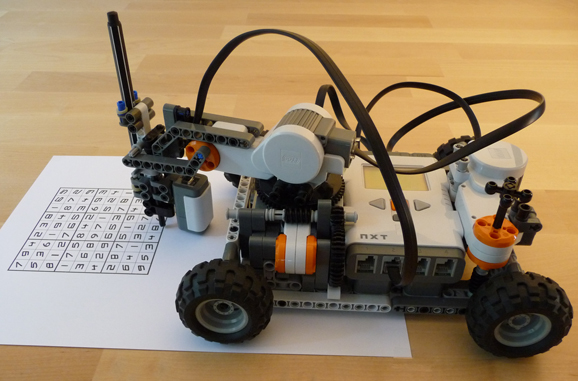Team:Alberta/Project/Automation
From 2009.igem.org
| Line 81: | Line 81: | ||
<li> | <li> | ||
| - | <h2>Why use a | + | <h2>Why use a "toy"?</h2> |
You may be wondering why we chose to use a mechanics kit made for adolescents to build our robot when there are much more sophisticated resources available? The inherent reality is that not everybody has access to a machine shop, PCB manufacturing equipment, and a micro-controller programmer. This equipment is rather expensive and not readily available to the general public. We hope that by using relatively inexpensive and readily available parts, places like high-schools and undergraduate research labs are be able to make use of our techniques. | You may be wondering why we chose to use a mechanics kit made for adolescents to build our robot when there are much more sophisticated resources available? The inherent reality is that not everybody has access to a machine shop, PCB manufacturing equipment, and a micro-controller programmer. This equipment is rather expensive and not readily available to the general public. We hope that by using relatively inexpensive and readily available parts, places like high-schools and undergraduate research labs are be able to make use of our techniques. | ||
| Line 142: | Line 142: | ||
The current physical design of the robot owes its inspiration to Hans Andersons sudoku solving robot (http://tiltedtwister.com/sudokusolver.html). Adaptation of the Anderson design allowed for the necessary amount of precision required for the 'pen' to be positioned over the well. This design has the added advantage of not possessing a large number of points where play in the gears and joints may become a problem. | The current physical design of the robot owes its inspiration to Hans Andersons sudoku solving robot (http://tiltedtwister.com/sudokusolver.html). Adaptation of the Anderson design allowed for the necessary amount of precision required for the 'pen' to be positioned over the well. This design has the added advantage of not possessing a large number of points where play in the gears and joints may become a problem. | ||
</p> | </p> | ||
| + | |||
| + | <center> | ||
| + | <img style="padding : 20px;" src="http://tiltedtwister.com/img/sudoku/sudoku1.jpg" align="center"> | ||
| + | </center> | ||
| + | |||
<center> | <center> | ||
Revision as of 22:21, 21 October 2009

 |
|
|
DIY Automation
One of the main themes of this project, as well as iGEM in general, is the simplification of both the parts and the processes of molecular biology. This allows synthetic biology to bring relatively advanced biological techniques 'to the masses'. The Biobytes Assembly is very rigid and reliable; however, it is also very repetitive and tedious. This has triggered us to develop an automated mechanical system (ie. a robot) capable of speeding up and simplifying our methods. The overall goal is that our robot would be simple enough to be used by high school students. This would provide a valuable tool in biological education. It is also our goal to create a system that is versatile enough to be used in more advanced research labs, thereby decreasing the time needed for plasmid construction. |
The Robotic DeviceOur robot is built entirely from a single Lego Mindstorms kit, using only the standard pieces and hardware sold with the kit.
|
Hardware and Software
|
Getting to a Working Prototype
|
Results
|
Future Work
|
In the event that you want to build it yourself...
|
 "
"






